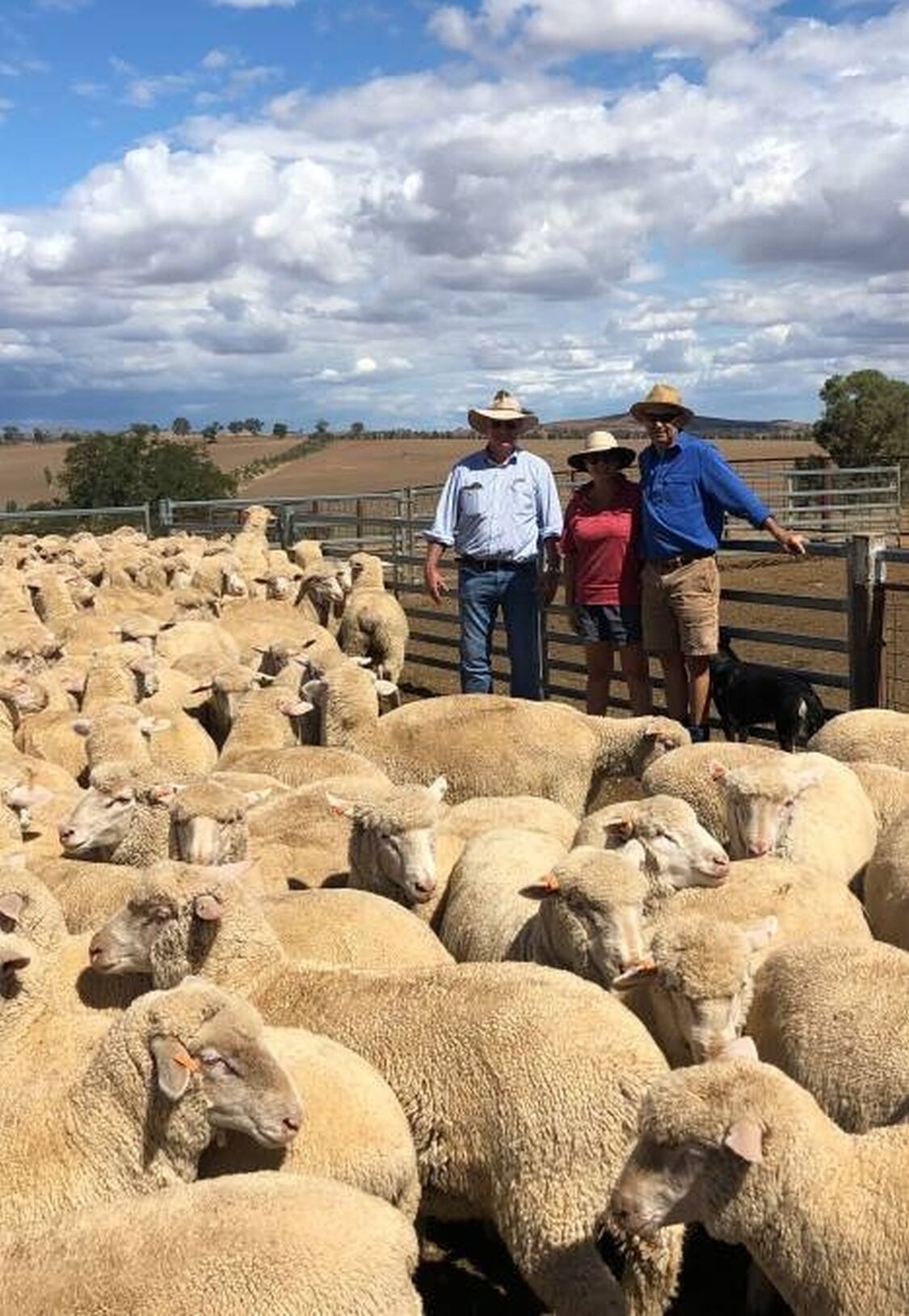Courtesy of The Land
Galong graziers Hugh and Fran Flanery are primed to continue producing the highest quality first-cross Poll Dorset lambs they can.
After coming through several years of prolonged drought conditions, the pair was able to maintain their Merino-ewe breeding base.
And - with this year's excellent seasonal conditions panning-out - are now pushing ahead with their sheep and cropping enterprise.
Typically, the Flanery's run a 2200-head Merino ewe flock, of which about 90 per cent are joined to Poll Dorset sires for prime lamb production and the remainder to Merinos for breeding replacements.
They have been using rams from Springwaters Poll Dorsets, based at Boorowa, for many years.
The target is to focus on growing optimum saleable lambs - aiming for a moderate size carcase, average fat coverage and sound eye-muscle depth.
With a good year impending in 2020, a quick finish will be attainable.
Mrs Flanery said consuming their own lamb produce ensured that they were well aware of the eating quality of the meat that drives them to strive for the best end-product.
She said their passion for cropping and pasture improvements has helped their business get the sheep flock through the past three tough years.
The Flanery's join their ewes in March for a spring lambing and long-term scanning results show the flock's average pregnancy rate is about 110-120 per cent.
Multiple-bearing ewes are separated out and given preferential feeding to boost their lamb survival rates and recovery before the next joining.
Although, this year, Mr Flanery said all ewes had experienced a 'buffet' of feed, given the top seasonal conditions.
He said first-cross lambs were sold from mid-December through to March-April of the following year - depending on markets - at liveweights of 45-48 kilograms for domestic sale and above 54kg for exports.
Typically, the aim was for lambs to be gaining 250 grams of weight per head per day, depending on the type of feed they were being grazed on and the season.
"This year the lambs will finish really well, so we will target markets seeking heavier lambs," Mr Flanery said.
"But, during the spring and summer we make sure we are in regular contact with our agent - David Corcoran - to find the best selling options for our stock."
Wool produced by the Flanery's Merino ewes has an average fibre diameter of 18-19-micron and average cuts are about three to five kilograms per head (depending on the season).
When selecting Poll Dorset sires for their breeding stock, the Flanerys target the Lambplan Australian Sheep Breeding Values (ASBVs) for eye muscle depth, moderate fat content, multiple births and medium weights/size.
"At the end of the day, we want to be producing a top quality eating product from a well-framed ewe that can birth easily and provide us with fast growing, quality lambs," Mrs Flanery said.
"We are seeing consistent genetic results in our prime lambs - which we acknowledge is the work (and therefore gains) made by our stud supplier - and we are getting good returns each year.
"We know our lambs finish really well and we strive to supply consistent quality lines."
In coming years, the Flanerys plan to continuing building-up their sheep enterprise.
A range of tactics to lift lamb survival are being implemented, including planting more trees in shelter belts along with making pasture improvements to help boost soil nutrition and help to drought-proof the property.
The couple make sure to stay abreast of research and development in sheep and cropping production systems to ensure their business continues to grow and risks are addressed.

Poll Dorset growers Hugh and Fran Flanery with their agent David Corcoran, of Delta